The Formula One championship is truly a global sport as races are being held around the world. In recent years we have seen new race tracks in new countries and this is good for the sport, in principle. But unfortunately, the new tracks have not always lived up to expectations in terms of the quality of racing these offer. This is a shame because Formula 1 has a rich history that includes many memorable race tracks that are no longer in the championship.
Of course, there is a good reason why some of the old tracks are not included in the championship anymore -- it was just crazy. Drivers defied the dangers and put their lives on the line as they steered through the corners and the straights.
Unfortunately, the tracks also had fatal accidents over the decades and as the sport started putting more emphasis on safety, some of the tracks were dropped out of the F1 calendar and some heavily modified.
Yet the tracks live on in the memories of motorsport fans. Some remember how Ayrton Senna won the shortest F1 race ever in Adelaide. Others relive the duels Michael Schumacher and Fernando Alonso had in Imola. And what about Niki Lauda's heroic return to the tracks after a near-fatal crash in the old Nürburgring?
In this list, we take a look at some the wildest tracks F1 has had. The task is difficult because the Formula 1 championship has visited so many.
#1 Hockenheimring
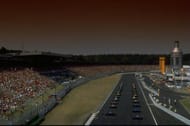
The old Hockenheimring was like a German Autobahn in the forest -- it was simple and very fast. The first F1 race of the track was held in 1970 and then the track was formed out of three straights, two chicanes, and a high-speed corner. In 1982 a third chicane was added to the track, but it did not really change its character.
The drivers raced through the forest at staggering speeds and would enter the stadium area at the end of each lap as spectators cheered on their heroes. The last race in the old Hockenheim track was held in 2001 and it was won by Ralf Schumacher. The track was modernised for 2002 and it has hosted F1 races after that, though not every year.
Here's Jean Alesi driving in the old Hockenheim track on his way to sixth place in 2001.
#2 Imola
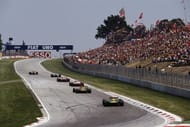
The Autodromo Internazionale Enzo e Dino Ferrari is the official name of the race track more commonly known as Imola (which is a town located near to the track). Imola has a sad history in F1 because it oversaw the black weekend of F1 in 1994 when both Roland Ratzenberger and Ayrton Senna passed away after a crash. The weekend had started badly as Rubens Barrichello had a massive crash on Friday, but he survived and returned to racing.
Imola also offers great memories of the Italian Tifosi (Ferrari fans) gathering in the grandstands to support Ferrari during the F1 weekends. The last race at Imola was in 2006 and it was won by Michael Schumacher in his legendary Ferrari.
Schumacher took the pole position in the last GP weekend at Imola in 2006.
#3 Adelaide Street Circuit
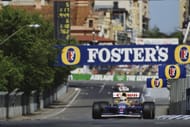
The Adelaide Street Circuit was not like the other street circuits. It was built into the central business district of Adelaide and held the first Australian Grand Prix in 1985. It offered the drivers some quick corners and the final sector had a nice flow to it. And it had the long Brabham straight.
Adelaide also hosted the shortest ever F1 race in history in 1991 as the rain turned the race into chaos and it was stopped after 16 laps out of the planned 81 was completed. Ayrton Senna won the short race ahead of Nigel Mansell and Gerhard Berger.
The last F1 race was held there in 1995 and the Australian GP has since been held in Melbourne. Mika Häkkinen had a big accident in Adelaide in 1995, but luckily he was back on the grid in Melborune next year.
Here's the onboard footage of Ayrton Senna in Adelaide in 1993.
#4 Österreichring
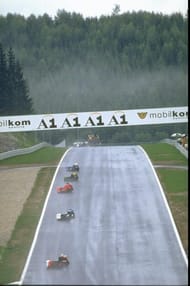
Yes, like Hockenheim, this track is in the Formula One calendar today, but it has been modified for safety reasons. So much so that it is a completely different track than it used to be. The current Red Bull Ring was formerly known as the Österreichring and it was built in 1969.
Back then it had eight corners, but it got one more in 1977. The track went up and down in the Alps and offered a great challenge for the drivers. But it was very dangerous. It was dropped from the F1 calendar after the 1987 season for safety reasons. It made a comeback in 1997 (after modifications by Herman Tilke) and is now what we know as the Red Bull Ring.
Here's Satoru Nakajima storming through the old Österreichring in 1987.
#5 Nürburgring
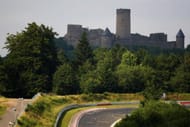
Our list would not be complete without the old Nürburgring track. The modern Nürburgring we know was opened in 1984 to replace the dangerous and long old one. The longer version was drawn by engineers in only two years. The 'groundbreaking ceremony' was in 1925 and the track was officially opened in 1927.
The circuit was 23.8-km long then, including the legendary and dangerous Nordschleife (North Loop). The first Formula 1 world championship event was held here in 1951.
"Difficult to drive, easy to die," was how world champion Jochen Rindt described the old Nürburgring. Nordschleife had 160 corners and it tested the drivers as the track went up and down -- the elevation change was over 300 metres. The track was very dangerous and Niki Lauda had a near-fatal accident here in 1976. This marked the end of the old Nürburgring as a Grand Prix track. In a way, it also marked the end of an era in Formula 1.
Nick Heidfeld drove a Formula 1 show-run on Nordschleife with his BMW-Sauber in 2007.
